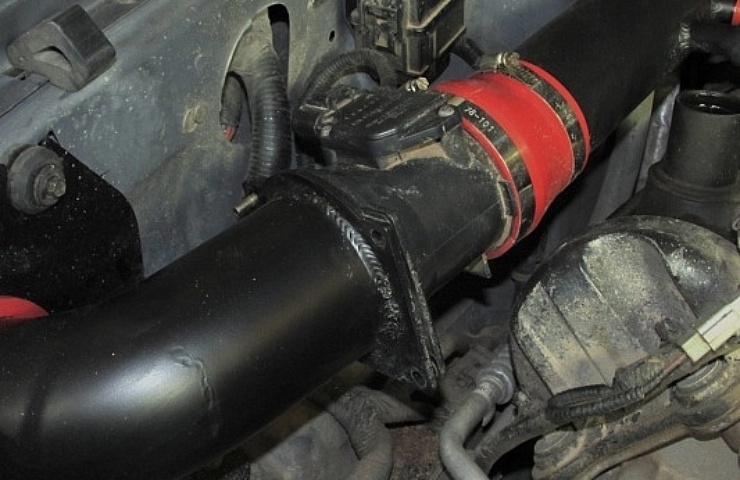Contents
The MAF sensor is arguably the most critical one in your engine. Every aspect of the ECM’s control is based on the readings from the MAF. When the MAF is not working correctly, your ECM can’t properly control the engine.
Your engine’s MAF sensor is located in the air intake tube. For some vehicles, the MAF sensor is placed at the beginning of the line near the air filter. Others are in the middle of the tube. The location varies by manufacturer and model.
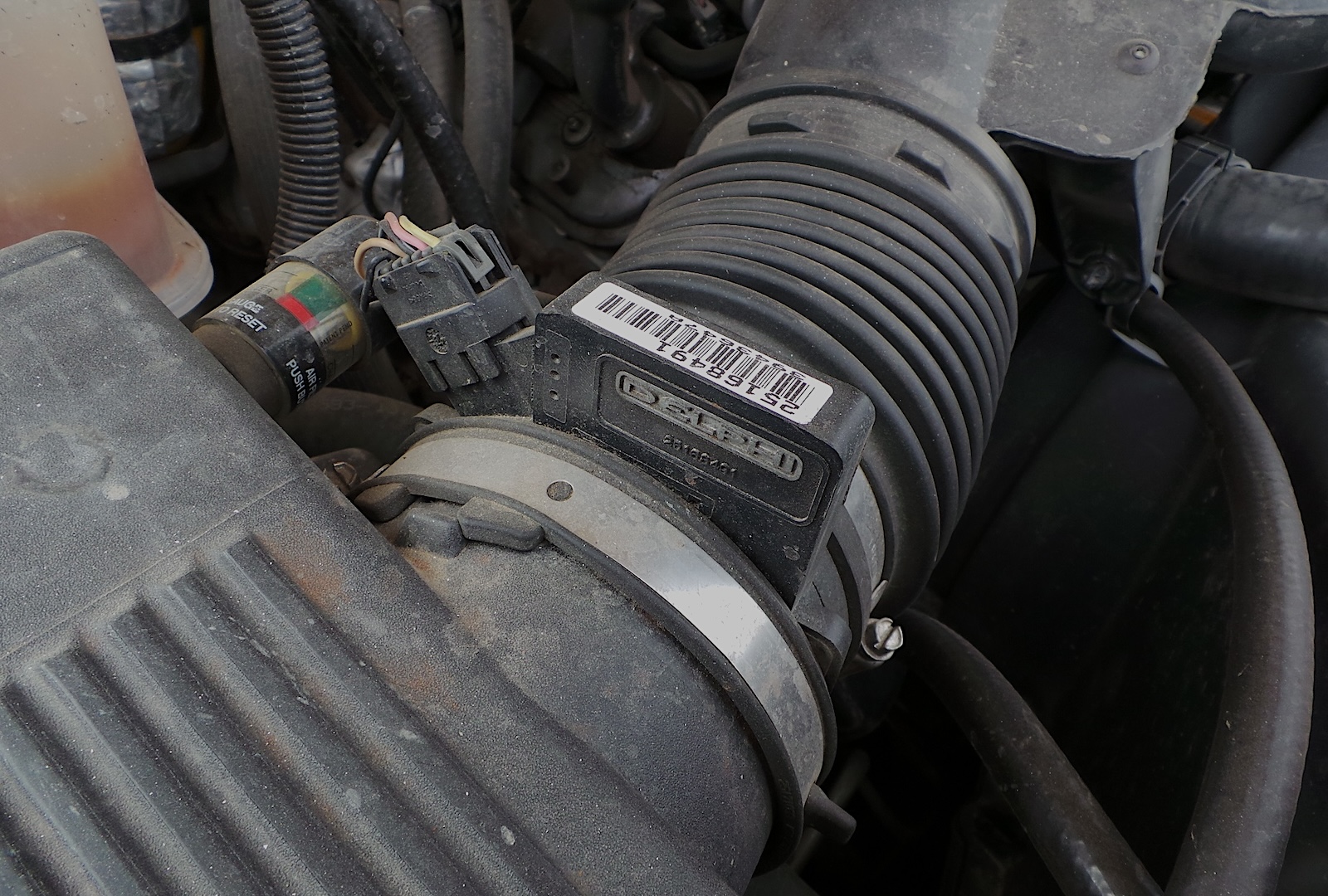
The MAF sensor is usually located near the air box. This is a large cartridge-type sensor on a Chevy Silverado pickup truck.
Most MAF sensors use two wires in the center of the airflow path. One is heated, and the other isn’t. The airflow cools the heated wire, and the ECM compares it with the non-heated wire. The ECM interprets the difference between airflow and air temperature. Some sensors have a separate AIT (Air Intake Temperature) sensor. These readings are constantly factored in milliseconds—thousands of times per minute.
Symptoms Of A Dirty or Failing MAF
When the MAF is dirty or damaged, the signals might not be accurate, resulting in poor engine performance. Here are the common symptoms:
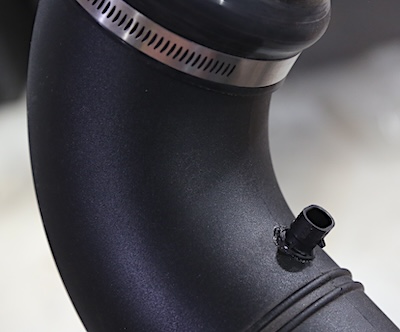
Some vehicles use a small form sensor like this one. You can pull it out of the rubber boot.
Check engine light – Your check engine light illuminates, and a code is set. Use a scan tool to check the codes. Common MAF-sensor-related codes are P0100-1004, P0171, and P0174.
Rich condition at idle – This condition occurs when the engine uses too much fuel. The failing MAF, unsure of engine conditions, might send more fuel to keep things cool. You can detect a heavy burning fuel smell.
Lean under load – When you punch the throttle pedal, an engine with a faulty MAF may be lean (with insufficient fuel). This is accompanied by detonation (pinging or knocking) in the engine. You might hear a high-pitched rattle or ping.
Rough idle/stalling – If the MAF fails, your engine might not run well, especially at idle. The engine will be difficult to start, run rough, and could stall out.
Shop now for MAF sensorsTesting and Cleaning a MAF Sensor
First, you should check the MAF visually, looking for damaged sensor wires, dirt, or oil contamination. Check the plug and wires for damage.
Then, use a digital multimeter to test the input and output of the MAF signal and reference wires. Refer to your vehicle’s repair manual for the specific sensor operating voltages.
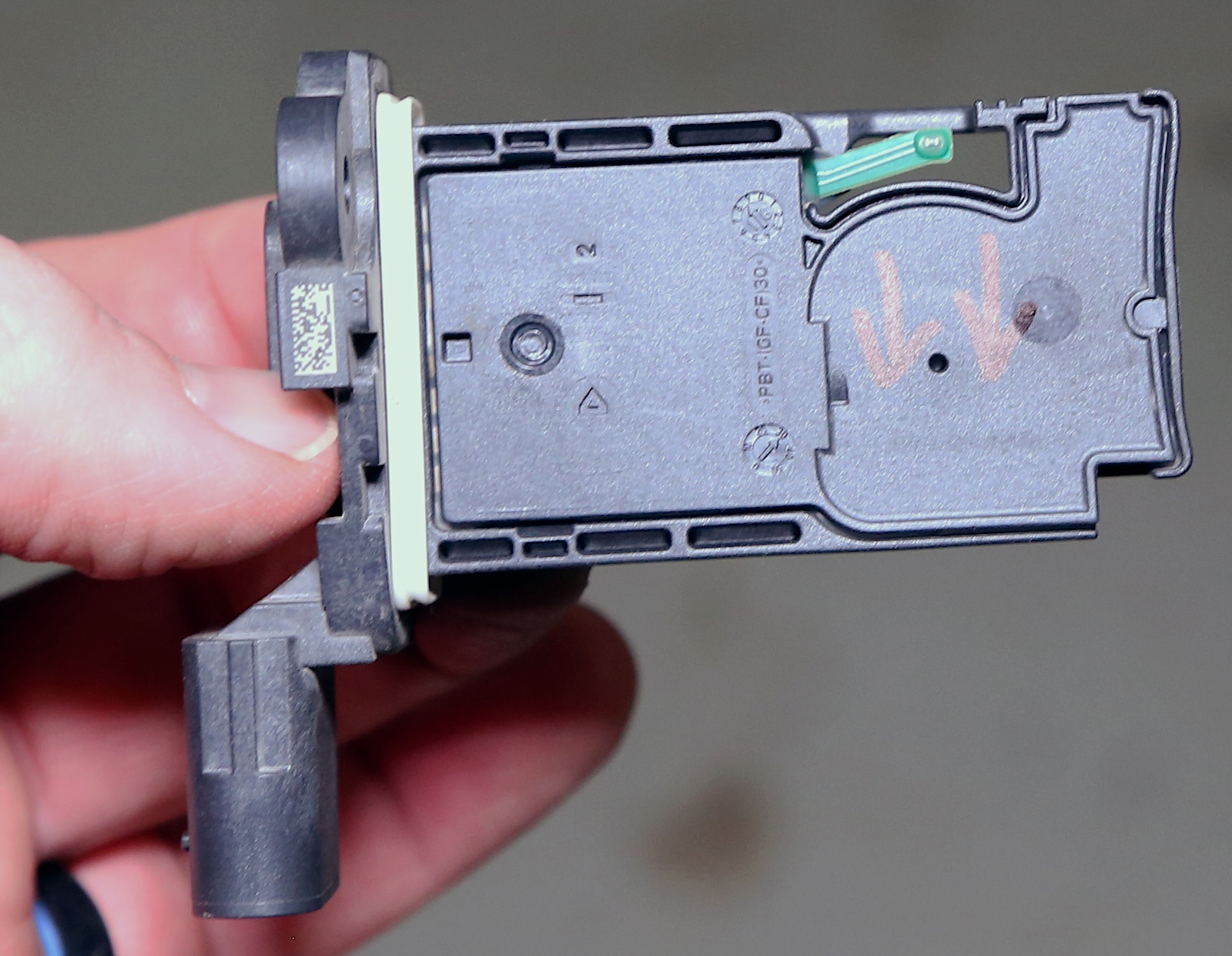
The sensor is directional. You can mark it with a pen to show the flow direction for reference. The small tab on the upper right is the sensor bar on this 2015 GM sensor.
Cleaning
Most of the time, you can clean your MAF sensor to get it going. This requires a can of specialty MAF sensor cleaner. Don’t use anything other than MAF sensor cleaner because the sensing wires could be damaged. The sensor has delicate electronics inside, so only MAF cleaner is safe for electrical connections.
Step-by-Step
- Turn the engine off and remove the key from the ignition switch. This is important because the MAF is active when the key is in the ignition.
- Next, locate the MAF sensor. Disconnect the air intake tubing to access the MAF sensor. Some vehicles have a bolt-in or push-in MAF that you can remove from the tube.
- Remove the sensor. Pay attention to the orientation of the sensor. They are directional and must be installed in a specific position. Take a picture of the sensor before removing it to create a record of its position.
- Disconnect the MAF from the terminal plug.
- Place a clean towel on your workspace and lay the sensor on the towel. Spray all sides of the sensor, inside and outside, including the terminals. Don’t let anything touch the sensor wires (other than the spray). They are delicate and will be damaged if you touch them. Spray the sensor thoroughly.
- Allow the sensor to dry for about five minutes. Then, reinstall it into the vehicle. Make sure you put it back in the same position. Because they are directional, your engine will not run well if installed backward.

With the MAF sensor housing removed, spray the cleaner on everything, blasting the sensor wires 10-15 times.
Replacing A MAF Sensor
The replacement process is the same as the cleaning process. The MAF sensor needs to be removed from the vehicle.
Before replacing a MAF sensor, test and clean it, and then check all of the lines, wires, and tubes connected to it for cracks, breaks, or other damage that could cause the MAF to fail. Some sensors have a replaceable sensor pack that goes into the sensor housing. These are more common for older vehicles but may be used on some newer vehicles. If there is any damage to the housing, replace the entire device.
- Turn off the engine and remove the key from the ignition.
- Locate the MAF.
- Disconnect any air intake tubing attached to the MAF. Newer vehicles use smaller MAF sensors that attach with screws or snap-in grommets, while older MAFs are in line with the air intake tube.
- Unplug the MAF from the wiring harness.
- Inspect the air intake tubing for cracks or other damage that may require repair or replacement.
- Install the new MAF sensor and reassemble the air intake if necessary.
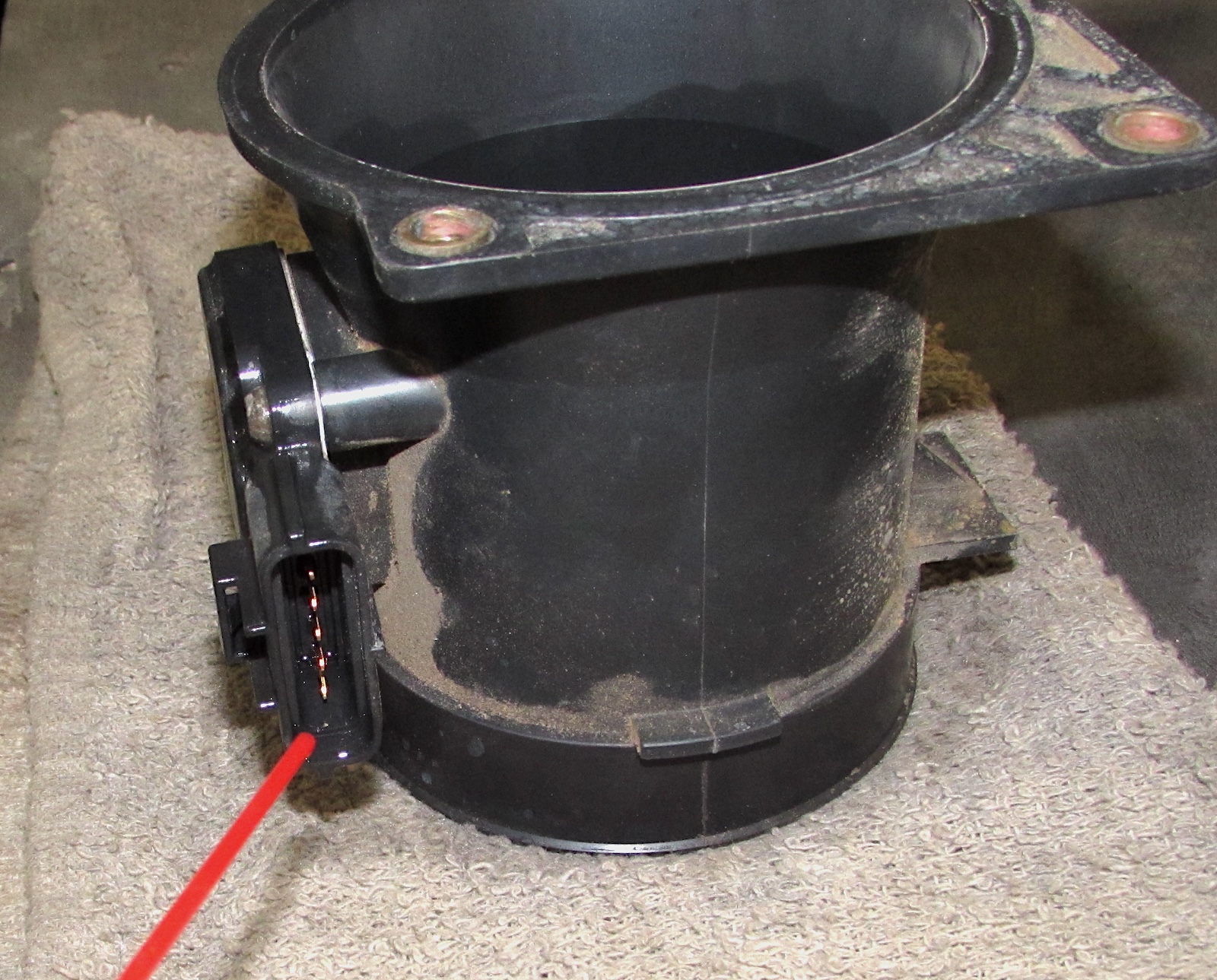
Don’t forget to clean the terminals. A bad connection can cause problems.
Sometimes, you must “learn” a new MAF to your ECM. This process is usually straightforward but varies by manufacturer and engine. Refer to your repair manual for details on your specific vehicle.
With a clean, functional MAF sensor, your engine should run like a top. Cleaning should be done with every air filter change to help extend the sensor’s life. A dirty sensor can cost you 10 horsepower. The performance penalty could be even more significant if it’s very dirty or damaged.
Shop now for MAF sensors
